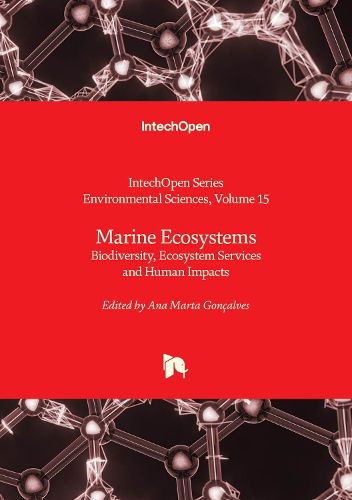Readings Newsletter
Become a Readings Member to make your shopping experience even easier.
Sign in or sign up for free!
You’re not far away from qualifying for FREE standard shipping within Australia
You’ve qualified for FREE standard shipping within Australia
The cart is loading…






This title is printed to order. This book may have been self-published. If so, we cannot guarantee the quality of the content. In the main most books will have gone through the editing process however some may not. We therefore suggest that you be aware of this before ordering this book. If in doubt check either the author or publisher’s details as we are unable to accept any returns unless they are faulty. Please contact us if you have any questions.
Marine ecosystems are very productive and include the open ocean, the deep-sea ocean, and coastal marine ecosystems, each of which has different physical and biological characteristics. The biodiversity of some of these ecosystems is very rich and abundant, offering unique opportunities for high-yield production of proteinaceous material, which is a source of high-quality foods. Biodiversity is fundamental to sustaining marine ecosystem services, such as food security, maintenance of water quality, and recovery from perturbations, which are currently being threatened worldwide. The main threats to marine biodiversity are habitat loss, eutrophication, overexploitation, pollution by hazardous substances, introduction of non-native species, and other human activities. Efforts to reduce these pressures are essential for coastal water quality, recovery of ecosystem services, global food security, and ecosystem stability. Bioindicators are important tools to be used as early warning signals to detect the presence of natural and chemical stressors when monitoring and managing ecosystems and thus promoting ecosystem health. The protection of biodiversity is a major target of the European Union Marine Strategy Framework Directive, requiring an assessment of the status of biodiversity on the level of species, habitats, and ecosystems, including genetic diversity and the role of biodiversity in food web structure and functioning. The restoration of marine ecosystems can support the productivity and reliability of goods and services that the ocean provides to humankind to maintain ecosystem integrity and stability. Some of the goods produced by the marine ecosystem services are fish harvests, wild plant and animal resources, water, and services that provide recreation, tourism, breeding and nursery habitats, water transport, carbon sequestration, erosion control, and habitat provision. This book comprises six chapters that discuss the ecological, economic, and social roles of a variety of organisms, from primary producers to consumers, relating these roles with water quality and conservation of estuarine and marine ecosystems and thus the contribution to human health.
$9.00 standard shipping within Australia
FREE standard shipping within Australia for orders over $100.00
Express & International shipping calculated at checkout
This title is printed to order. This book may have been self-published. If so, we cannot guarantee the quality of the content. In the main most books will have gone through the editing process however some may not. We therefore suggest that you be aware of this before ordering this book. If in doubt check either the author or publisher’s details as we are unable to accept any returns unless they are faulty. Please contact us if you have any questions.
Marine ecosystems are very productive and include the open ocean, the deep-sea ocean, and coastal marine ecosystems, each of which has different physical and biological characteristics. The biodiversity of some of these ecosystems is very rich and abundant, offering unique opportunities for high-yield production of proteinaceous material, which is a source of high-quality foods. Biodiversity is fundamental to sustaining marine ecosystem services, such as food security, maintenance of water quality, and recovery from perturbations, which are currently being threatened worldwide. The main threats to marine biodiversity are habitat loss, eutrophication, overexploitation, pollution by hazardous substances, introduction of non-native species, and other human activities. Efforts to reduce these pressures are essential for coastal water quality, recovery of ecosystem services, global food security, and ecosystem stability. Bioindicators are important tools to be used as early warning signals to detect the presence of natural and chemical stressors when monitoring and managing ecosystems and thus promoting ecosystem health. The protection of biodiversity is a major target of the European Union Marine Strategy Framework Directive, requiring an assessment of the status of biodiversity on the level of species, habitats, and ecosystems, including genetic diversity and the role of biodiversity in food web structure and functioning. The restoration of marine ecosystems can support the productivity and reliability of goods and services that the ocean provides to humankind to maintain ecosystem integrity and stability. Some of the goods produced by the marine ecosystem services are fish harvests, wild plant and animal resources, water, and services that provide recreation, tourism, breeding and nursery habitats, water transport, carbon sequestration, erosion control, and habitat provision. This book comprises six chapters that discuss the ecological, economic, and social roles of a variety of organisms, from primary producers to consumers, relating these roles with water quality and conservation of estuarine and marine ecosystems and thus the contribution to human health.